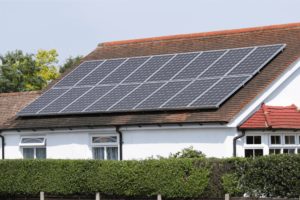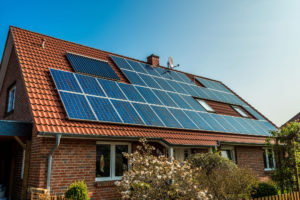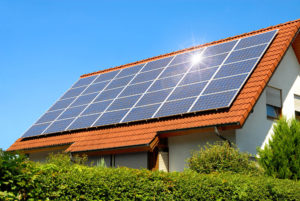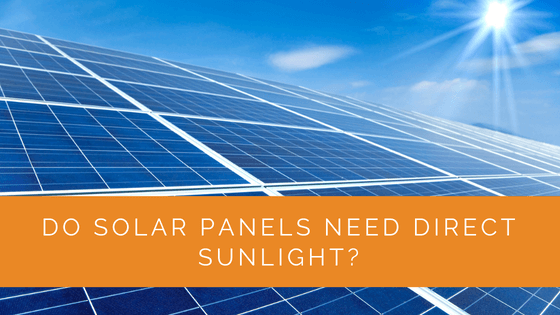Should I place my solar panels near the door? Will they work well if I position them in a shady area? Many questions storm your mind when purchasing gadgets that work with solar panels.
While green energy helps you save on energy bills, you must think about the peak output with placement in direct sunlight.
The quick answer is no; solar panels do not need direct sunlight to work once installed. Solar panels do not always need direct sunlight to produce electricity. That said, your gadgets perform the best if they have unobstructed access to sunlight.
Please continue reading to learn more about how solar panels work, the factors affecting their performance, and how to make their best use.
Contents
- 1 Key Takeaways
- 2 How Do Solar Panels Produce Electricity?
- 3 Can Solar Panels Work in the Shade?
- 4 Other Factors that Impact Solar Panels’ Performance
- 5 How Can You Make the Best Use of the Solar Panel?
- 6 Case Study: Solar Panel Installation and Performance Without Direct Sunlight
- 7 Expert Insights From Our Solar Panel Installers About Solar Panel Efficiency
- 8 Discover the Power of Solar with Solar Panels Network
- 9 In A Nutshell
Key Takeaways
- Solar panels do not require direct sunlight to produce electricity; they can also work with indirect sunlight, although their performance may vary.
- Factors affecting solar panel performance in less sunny conditions include the amount of shade, the type of photovoltaic cells used, the choice of inverter setup, and the placement on the roof.
- Weather conditions such as cloudy days, rainy weather, and heavy snowfall can impact solar panel efficiency, but proper maintenance can help mitigate these effects. Additionally, factors like sun hours, utility rates, and payback choices play a role in optimising the use of solar panels.
How Do Solar Panels Produce Electricity?
Solar panels bank on access to sunlight for clean energy production. These panels take inputs from both indirect and direct sunlight. Technically, the presence of photons acts as the primary source of energy carrier for the system.
Even without direct sunlight, the photovoltaic or solar cells will extract the photons from the surroundings to generate electricity. The only caveat to the entire process lies with the peak output.
The standard measure of solar panels’ work is the peak output that the entire system can produce. The cells require maximum solar insolation that the earth receives daily to generate the expected results.
On average, the planet absorbs 1000W/m2 of sunlight, termed ‘peak sun hours.’ The maximum efficiency of any photovoltaic cells for solar power production depends on direct sunlight. Even though your panels can adapt to lower solar irradiance, the performance will receive a blow.

Can Solar Panels Work in the Shade?
Solar electricity depends on how much sunlight it receives during the recharge time for the cells, but your solar panels can still work with indirect sunlight.
Here are the critical factors that affect electrical energy generation through cumulative solar radiation.
How Much Shade Do Your Panels Receive?
The power optimisers count in both the duration of the peak sun exposure and indirect light reception. Going by the common logic, the longer the block sunlight duration, the steadier the dip in the maximum output will be.
How Advanced Your Photovoltaic Cells are?
There is a massive contrast in the solar payback period of modern solar cells and other panels. Most older solar panel variants work on standard PV cells, while the latest technology relies on half-cut features.
The advanced version significantly reduces the leakage between the conversion from solar energy to electrical current.
Which Inverter Setup Do You Want to Use?
Power storage plays a decisive role in providing the output you desire. Your overall performance will drastically dip in the shade if you’re installing solar panels with single-string inverters. At the same time, the conventional single panel with power optimisers will not affect the electric current output when one panel doesn’t receive ample sunlight.
Which Part of the Roof Are You Installing Solar Panels?
Despite functioning with limited sunlight, you would not want to waste the opportunity to generate renewable energy and save money now, would you?
If the sunlight falls against the roof direction, the cost-effectiveness of the system output automatically reduces.
You must position your panels in the particular roof section which receives enough sunlight throughout the year.

Other Factors that Impact Solar Panels’ Performance
Since clean energy generation is a matter of sunlight availability, any shift in weather will threaten the optimum conditions.
Cloudy Days
With the overhead cloud cover, your solar panel will be unable to receive the sun’s rays. The heavy cloud will throttle the solar radiation to reach the earth’s surface, inadvertently affecting electricity creation.
Rainy Weather Conditions
With the dense cloud cover and heavy pelting, your solar panel will have difficulty receiving the sun’s energy. The dual obstruction will prevent solar power generation and can even reduce the overall efficiency by 40-90%. However, on the flip side, if you haven’t been active with the maintenance of the solar panel, the drizzle will take care of it.
Snowfall
Sunlight can penetrate the thin layer of snowfall, but the problem occurs when there’s heavy accumulation. Even though excess energy is still not possible, light dusting doesn’t stop power generation altogether. However, the dense blizzard during cold weather measurably impacts the alternating current processing.

How Can You Make the Best Use of the Solar Panel?
Solar energy is an excellent alternative to fossil fuels. That said, versatile technology requires certain conditions to deliver its best.
Read on to know what they are.
Sun Hours
Consider the four peak sun-hours exposure a necessity for your solar panels. The higher the peak hours, the more powerful the solar panel performance.
Utility Rates
Since savings are the backbone behind shifting to solar panel systems, local utility rates are pivotal. The concessions and incentives you receive with your electricity management will determine the monthly expenditure.
Payback Choices
The initial investment to install solar panels requires conscious deliberations and cost analysis. After all, the payback period depends on the primary expenditure made with the system.
At the same time, since the monthly costs incurred factor in with the payback period, you can utilise the available incentives for setting off.
Essentially, selling the surplus off-grid is a reasonable choice when you have more energy than you can consume.
Note: You can add the entire solar panel expenses to calculate the payback period. The resulting number will be your combined expenditure, which you’ll need to divide with the annual benefits for the payback year.
Case Study: Solar Panel Installation and Performance Without Direct Sunlight
Background
A family residing in a moderately cloudy region of the UK decided to install a solar panel system to reduce their electricity bills and carbon footprint. Their property had limited roof space with partial shading from nearby trees, raising concerns about the panels’ efficiency without direct sunlight.
Implementation
- Site Assessment: The installation team conducted a thorough site assessment, including roof orientation and shading analysis. They recommended high-efficiency monocrystalline panels combined with microinverters to optimize energy production despite shading.
- Installation Process: The solar panels were strategically installed on the roof’s sunniest side, with consideration for the property’s partial shading. The team also set up a monitoring system to track the panels’ performance and ensure maximum efficiency.
- System Setup and Testing: The system was tested under different weather conditions to assess its performance. The monitoring system provided real-time data on energy production, allowing for adjustments as needed.
Results
- Energy Production: The solar panels consistently generated electricity, even on cloudy days, thanks to the high-efficiency cells and microinverter technology. The system produced 80% of the expected energy output, even with partial shading.
- Cost Savings: The family reported a 50% reduction in their electricity bills, translating to annual savings of approximately £600. They also benefited from incentives for exporting surplus energy to the grid.
- Environmental Impact: The system contributed to a significant reduction in the household’s carbon footprint, equivalent to planting over 150 trees per year.
Summary
The case study demonstrates that solar panels can effectively generate electricity without direct sunlight. The use of advanced technology, such as high-efficiency panels and microinverters, mitigates the impact of shading and variable weather conditions, providing consistent energy production and significant cost savings. This case underscores the viability of solar energy solutions in diverse environmental conditions.
Expert Insights From Our Solar Panel Installers About Solar Panel Efficiency
Solar panels are designed to capture both direct and indirect sunlight. While direct sunlight maximizes efficiency, panels can still generate electricity on cloudy days. It’s crucial to consider placement to minimize shading and maximize sun exposure for optimal performance.
Senior Solar Engineer
Advancements in photovoltaic cell technology, such as bifacial panels and half-cut cells, have significantly improved the efficiency of solar panels, even in less-than-ideal sunlight conditions. This makes solar energy a reliable option for regions with variable weather.
Renewable Energy Specialist
Selecting the right inverter and considering factors like roof orientation are key to optimizing solar panel output. Modern systems are equipped to handle partial shading, ensuring consistent energy production throughout the day.
Energy Systems Consultant
Discover the Power of Solar with Solar Panels Network
Are you navigating the world of solar installations? Look no further than Solar Panels Network, the UK’s trusted partner in harnessing the sun’s potential. Our dedication goes beyond just installations; we’re on a mission to transform how homeowners and businesses across the UK perceive and utilise energy. By choosing us, you’re reducing your carbon footprint and making a smart financial move that promises savings for years ahead. Contact us today and embark on your solar journey.
In A Nutshell
Solar panels and direct sunlight seem the most obvious combination for the most efficient output. Many homeowners fret over the thought of sun exposure on their roofs. The worries begin to compound if the weather accompanies rain.
The good news is that your solar panels work even without direct sunlight. The system’s performance can vary, but not to the extent of rendering the technology futile. However, there are certain precautions, like careful roof placement, that you can take to optimise your solar panels’ effectiveness.
About the Author
Solar Panels Network stands at the forefront of solar energy solutions, driven by a team of seasoned solar engineers and energy consultants. With over decades of experience in delivering high-quality solar installations and maintenance, we are committed to promoting sustainable energy through customer-centric, tailored solutions. Our articles reflect this commitment, crafted collaboratively by experts to provide accurate, up-to-date insights into solar technology, ensuring our readers are well-informed and empowered in their solar energy decisions.

